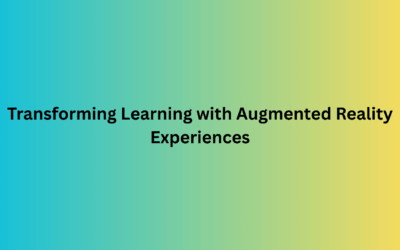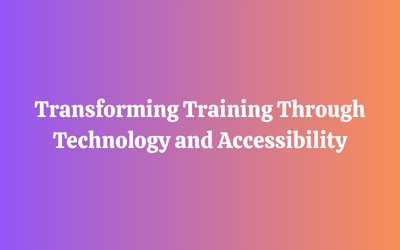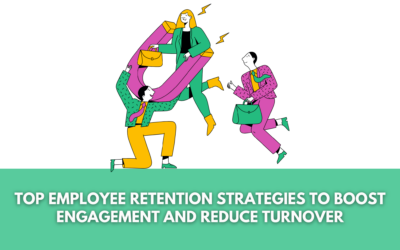Introduction: The Demand for Flexible Learning
In today’s digital learning landscape, online learning has become a business necessity. According to the latest 2025 research, employees increasingly demand flexibility, personalization, and efficiency in how they learn. Whether it’s structured online courses or flexible learning materials, the goal remains the same: deliver impactful training that adapts to real-world schedules.
Why the shift? A recent report shows that online learning leads to 25–60% higher retention rates compared to a classroom learning scenario. Plus, learners complete training 40–60% faster—without sacrificing quality.
What’s more, structured digital learning can influence employee retention. As per a recent research, workers who undergo structured online education are 60% more likely to stay with their current employer.
As organizations build their 2025 learning programme, a major decision remains: Should they rely on Synchronous classes or Asynchronous classes? Should training mimic a traditional classroom learning scenario, or evolve into flexible, autonomous experiences?
Let’s unpack both approaches—and explore how blending them creates more resilient, learner-centric models.

What is Synchronous Learning?
Synchronous classes refer to training that happens in real time. These may include instructor-led virtual classrooms, video calls, or live classes delivered through video conferencing platforms. It mirrors traditional training but is enhanced with learning technologies that support real-time collaboration and instant feedback.
In a virtual session, learners interact with instructors and peers simultaneously—mirroring in-person engagement, only online. Common tools include polls, chats, and breakout rooms.
Pros:
- Encourages real-time discussions and immediate feedback
- Enhances engagement through learning communities
- Suitable for structured sessions like onboarding, compliance, and leadership
Cons:
- Limited flexibility—requires scheduling and good internet access
- Risk of passive consumption if learning materials aren’t engaging
- Doesn’t always cater to learners juggling other responsibilities
What is Asynchronous Learning?
Asynchronous classes occur outside of real-time environments. Learners access pre-recorded videos, PDFs, interactive content, and other learning resources at their own pace. This model aligns with modern workflows—where employees balance job roles, personal time, and learning.
Popular within any learning management system, asynchronous delivery supports:
- Access to high-quality course content
- Repeated exposure to key concepts
- Autonomy over progression speed
Pros:
- Highly flexible for remote and global teams
- Supports scalable delivery across geographies
- Encourages offline learning and reflection
Cons:
- Can feel isolating without real-time interaction
- Relies heavily on self-motivation and good learning materials
- Engagement can drop without peer accountability
To combat isolation, many companies use online discussion boards and learning communities to facilitate peer interaction, even within asynchronous modules.
Why Blended Learning Wins in 2025
Instead of choosing between Synchronous classes and Asynchronous classes, many learning leaders now opt for blended formats. By combining the structure of synchronous delivery with the flexibility of asynchronous tools, businesses can address the full spectrum of learner needs.
Here’s how a hybrid model might look:
- Asynchronous classes deliver foundational course content through pre-recorded videos and reading materials
- Followed by a virtual session for Q&A, group work, or real-world simulations
- Peer interaction continues on online discussion boards or internal platforms
This mix works well for everything from compliance and onboarding to product training and leadership development. It also enables better tracking of learning objectives, offering measurable outcomes for both individuals and the business.
The Role of Stratbeans in Blended Learning
At Stratbeans, we’ve built an AI-powered learning management system and learning experience platform (LXP) that’s tailor-made for blended delivery. Our solution supports both synchronous and asynchronous formats, integrating with tools for video conferencing, virtual classrooms, and more.
Key Features:
- AI-driven content recommendations aligned with learning objectives
- Built-in gamification and smart nudges to maintain learner motivation
- Deep analytics on progress across both live and self-paced formats
- Embedded learning communities to build social learning habits
- Seamless support for offline learning via mobile-friendly content
This means you can create a learning programme that’s adaptive, engaging, and performance-focused—while keeping your workforce ready for what’s next.
Offline Learning Still Matters
Even in a world dominated by online learning, offline learning continues to play a role—especially in settings with poor connectivity or field-based roles. A good blended strategy leaves room for printed learning materials, on-site sessions, and informal peer learning.
At Stratbeans, we design training that accounts for all contexts—from urban offices with strong Wi-Fi to remote locations where offline learning is the only option. This ensures that no learner is left behind, regardless of tech access or bandwidth.
Final Thoughts: It’s All About the Blend
As we step further into 2025, digital learning must evolve to reflect how we live and work. Learners need flexible, engaging formats—and organizations need scalable, trackable outcomes.
- Synchronous classes offer immediacy, structure, and connection
- Asynchronous classes provide autonomy, scalability, and efficiency
- Together, they create adaptive learning programmes that cater to every role, schedule, and goal
When designed thoughtfully, online education doesn’t replace the classroom—it redefines it. Whether it’s live classes or virtual learning, the real power lies in using both formats strategically.
By embracing the full spectrum of learning technologies and formats, organizations can build thriving learning communities, meet diverse learner needs, and stay ahead in the ever-evolving digital learning landscape.The most effective strategy for 2025?
Not choosing one format over the other—but blending them.
Our News
- AI
- Animations
- Articulate
- Articulate 360
- Articulate Engage
- Articulate Live
- Articulate Presenter
- Articulate Quizmaker
- Articulate Replay
- Articulate Review
- Articulate Storyline
- Articulate Storyline 3
- Articulate Studio
- bite sized learning
- Characters
- Content Library
- Corporate Communication
- E-Learning
- e-Learning Authoring Tools
- Employee Engagement
- Game-Based Learning
- Gamification
- Gamiflexer
- Go Sales
- Healthcare
- Instructional Design
- Interactivity
- Knowledge Transfer
- L&D Trends
- Learning
- Learning & Development
- Learning Experience platform
- Learning Management System
- LMS
- LXP
- Microlearning
- mLearning
- Mobile Learning
- Nugget Learning
- Online Training
- Peek
- Performance Support
- Preso
- Quiz and Assessment Platform
- Replay 360
- Rise
- SCORM
- Screen Capture
- Software
- Storyline 360
- Studio 360
- Training Management
- Trainings
- Uncategorized




